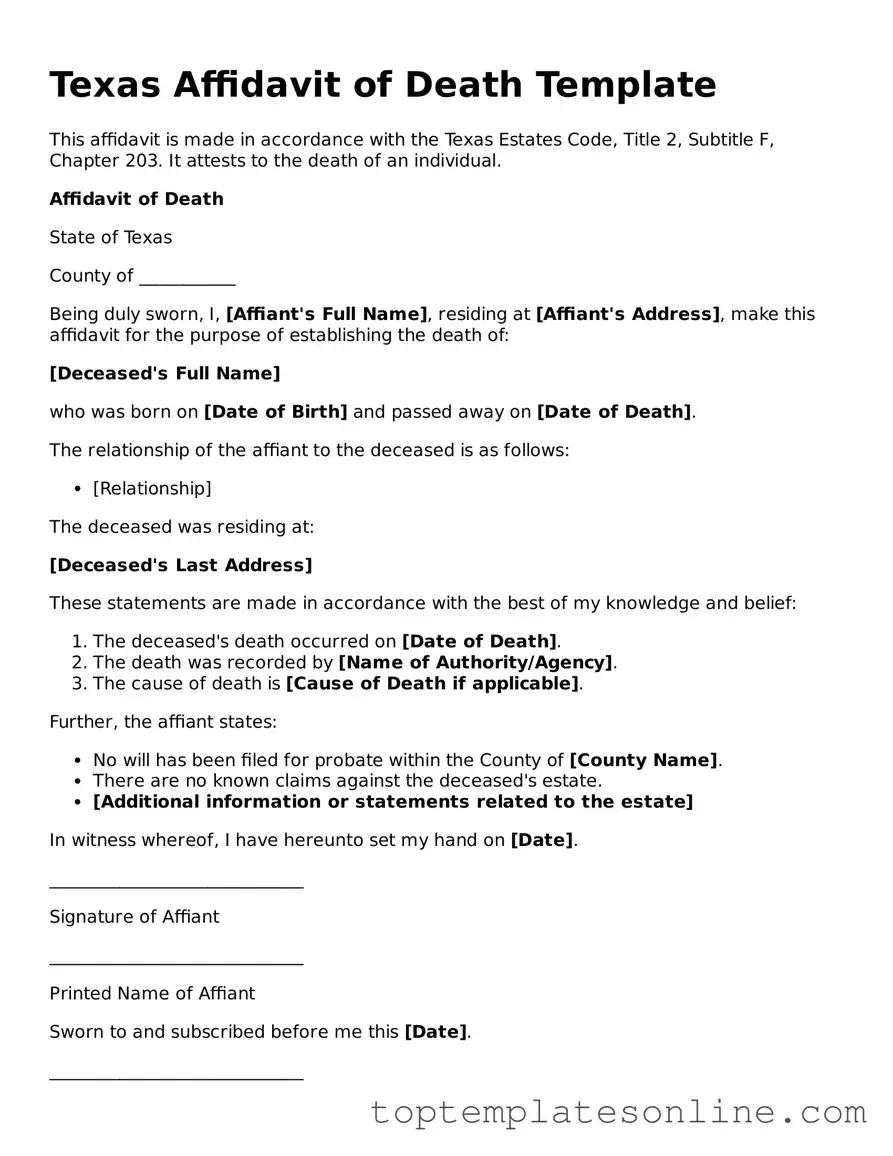In the state of Texas, the Affidavit of Death serves as a crucial legal document that facilitates the transfer of property and the settling of an estate following an individual's passing. This form is particularly important for those dealing with real estate, as it provides a formal declaration that a person has died, thereby allowing for the smooth transition of ownership without the need for a lengthy probate process. Typically, the affidavit must be signed by a qualified individual, such as a family member or an executor of the estate, who can verify the death and provide relevant details. Key elements of the form include the decedent's full name, date of death, and pertinent information regarding their estate. Additionally, it may require the inclusion of supporting documentation, such as a death certificate, to validate the claims made within the affidavit. Understanding the nuances of this form is essential for anyone navigating the complexities of estate management in Texas, as it not only aids in legal compliance but also ensures that the wishes of the deceased are honored in a timely manner.
